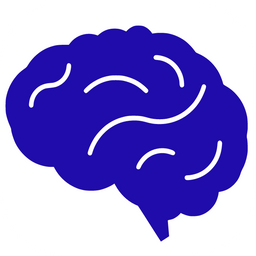Key Topics Covered in Year 7 Maths
1. Numbers and Algebra
Powers and Roots
- Students work with powers, prime factorization, and square roots of perfect squares.
- Example Question: What is the prime factorization of 64?
- Learning Outcome: Students should be able to express whole numbers as products of prime factors and understand square roots.
Fractions, Decimals, and Percentages
- Students perform calculations with fractions, decimals, and percentages, converting between them.
- Example Question: What is 0.75 as a percentage?
- Learning Outcome: Convert between these forms and solve problems involving their operations.
Ratios and Best Buys
Students solve problems using ratios and determine the best buy when comparing products.
- Example Question: Which is the better buy: 500g of rice for $2.50 or 750g for $3.50?
- Learning Outcome: Analyse ratios and use mental math or technology for financial decisions.
2. Algebra
Introduction to Variables
Students learn to represent real-life situations with algebraic expressions and solve simple linear equations.
- Example Question: Solve for x in 3x + 5 = 11.
- Learning Outcome: Understand variables and apply basic algebraic principles.
3. Measurement and Geometry:
Area and Volume Calculations
Students learn to calculate the area of triangles, rectangles, and the volume of rectangular prisms.
- Example Question: What is the area of a triangle with a base of 6cm and a height of 4cm?
- Learning Outcome: Use formulas for geometric calculations.
Symmetry and Transformations
Students identify lines of symmetry and transformations in geometric shapes.
- Example Question: Identify the symmetries in a square.
- Learning Outcome: Apply knowledge of symmetry and basic transformations.
4. Statistics and Probability:
Data Collection and Interpretation
Students collect and analyse data using graphs like stem-and-leaf plots.
- Example Question: Construct a dot plot for the following data: 3, 5, 7, 5, 6, 8, 6, 7.
- Learning Outcome: Create and interpret data displays, and calculate mean, median, and mode.
Probability
Students explore simple probability and calculate the likelihood of events.
- Example Question: What is the probability of rolling a 4 on a six-sided die?
- Learning Outcome: Understand sample spaces and assign probabilities.
How Will Students Be Assessed?
Year 7 Maths assessments aim to gauge a student’s understanding and application of the curriculum’s core concepts. These assessments are varied and designed to target different skills and knowledge areas, including:
1. Class Tests
Regular written tests will focus on specific topics like algebraic expressions, measurement, or probability. These tests often include problem-solving tasks where students must show their working to demonstrate their reasoning and method.
Example: In a test on geometry, students might be asked to calculate the area of a compound shape, requiring them to break it down into known shapes like rectangles and triangles.
2. Projects and Practical Assessments
Students may be asked to work on longer-term projects that integrate multiple topics. For instance, a project could involve collecting data from real-life sources, creating graphs, and analysing the results, combining both statistics and probability.
Example: A project might ask students to investigate the daily screen time of their peers, create a bar chart, and interpret the data to discuss trends.
3. Homework and Quizzes
Frequent quizzes, either online or on paper, help reinforce key concepts like fractions, percentages, or algebra. These shorter assessments are designed to provide immediate feedback and identify areas for improvement.
Example: A quick 10-minute quiz on converting fractions to decimals or solving linear equations can ensure students stay up to speed with daily lessons.
4. End-of-Year Exam
At the end of the academic year, students are typically assessed with a formal exam that covers all the major topics from the curriculum. This comprehensive assessment tests their retention, understanding, and ability to apply concepts across number and algebra, geometry, and statistics.
This structured approach ensures that students are assessed across different dimensions of learning, from their problem-solving skills to their ability to collaborate and apply mathematical concepts to real-world situations. The assessments not only evaluate their knowledge but also provide insights into areas they may need to strengthen as they progress to more complex mathematical topics.
How can Parents help their Children achieve their academic potential?
- Encourage Regular Practice: Daily practice of mathematical concepts helps build confidence. You can get a tutor from KIS Academics who can provide some extra practice questions.
- Apply Math to Everyday Life: Involve your child in shopping decisions by asking them to compare prices and calculate discounts, reinforcing their knowledge of ratios, percentages, and best buys in real life!
- Create a Positive Learning Environment: Help your child stay organized with their assignments and encourage a mindset that mistakes are a part of learning.
- Seek extra learning support when needed: If your child struggles with a particular topic, consider hiring a helping hand. KIS Academics offers tailored tutoring that focuses on the specific needs of each student, helping them bridge gaps and excel.
Conclusion
All the best for the new school year, and happy learning! For more study tips and resources, here are some handy articles:



FAQs
What is the hardest part of Year 7 Maths?
Many students find the introduction of algebra challenging. However, with consistent practice, they can grasp it over time. Breaking problems into smaller steps and using visual aids can help.
How often should my child practice Maths in Year 7?
Daily practice, even for just 15-20 minutes, can greatly improve your child's confidence and ability. Consistent, small efforts are more effective than cramming.
What should I do if my child is falling behind in Maths class?
If your child struggles, consider discussing their progress with their teacher and looking into tutoring options. KIS Academics offers specialized support to help students catch up and even go beyond the curriculum.
Written by KIS Academics Tutor, Simran Vaishnav. Simran is currently pursuing a Bachelor of Medical Studies / Doctor of Medicine at Bond University and has received stellar reviews from her past KIS Academics students. You can view Simran's profile here and request her as a tutor.
Want more personalized study guidance to help drastically improve your marks? A private tutor from KIS Academics can make the biggest difference!







